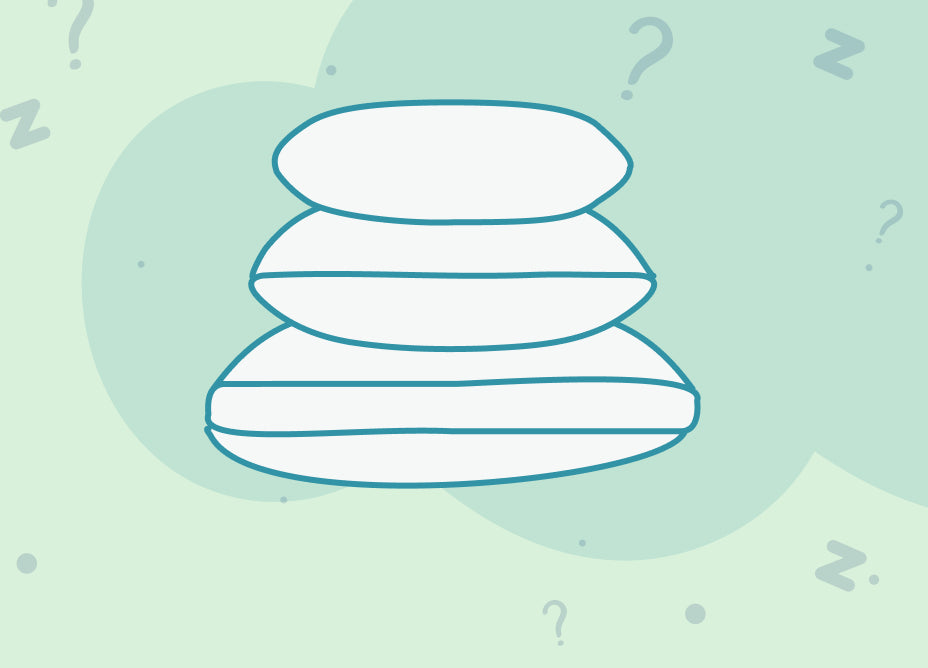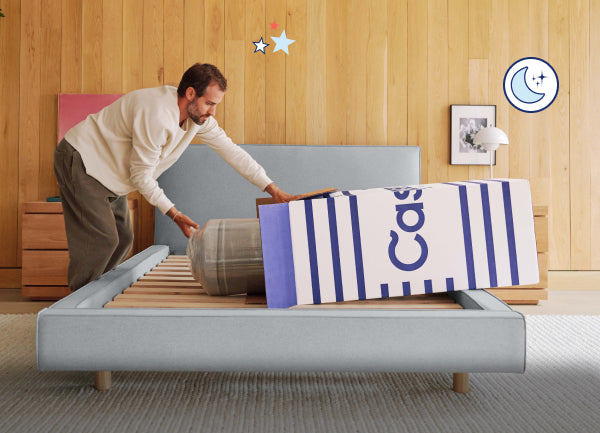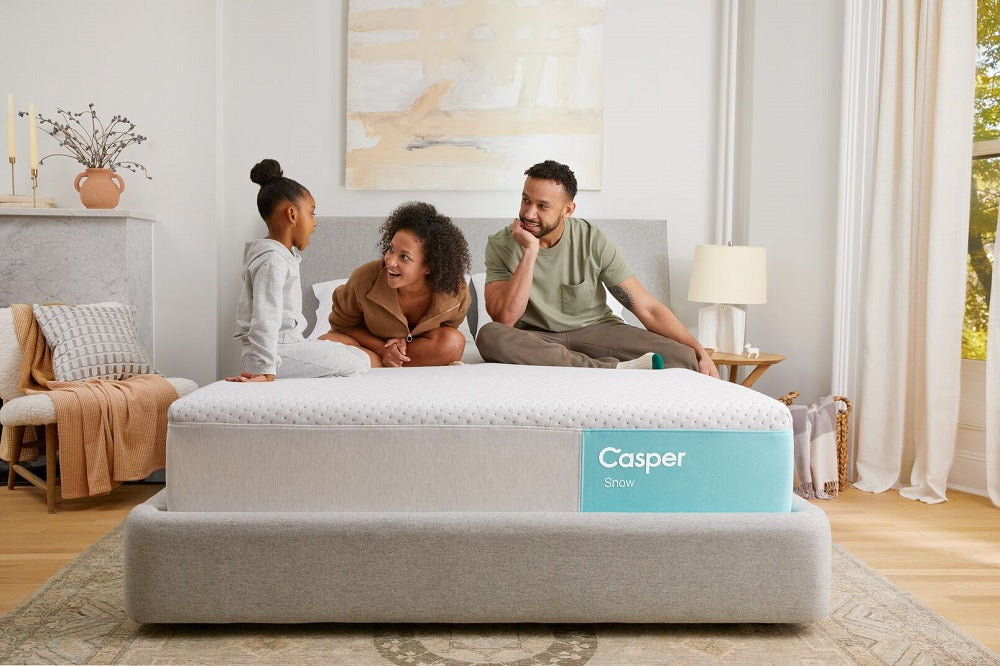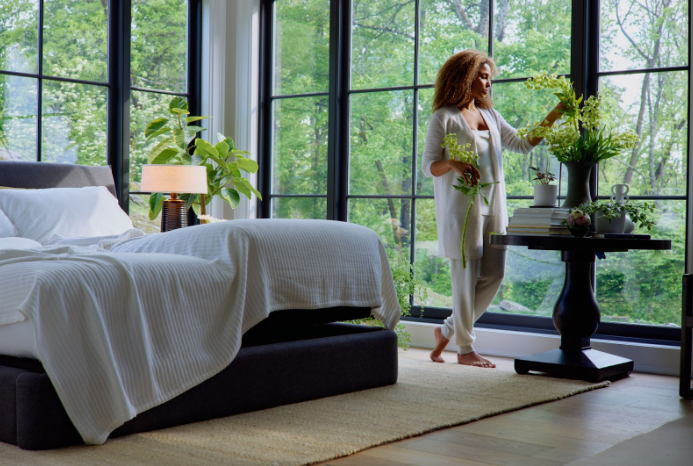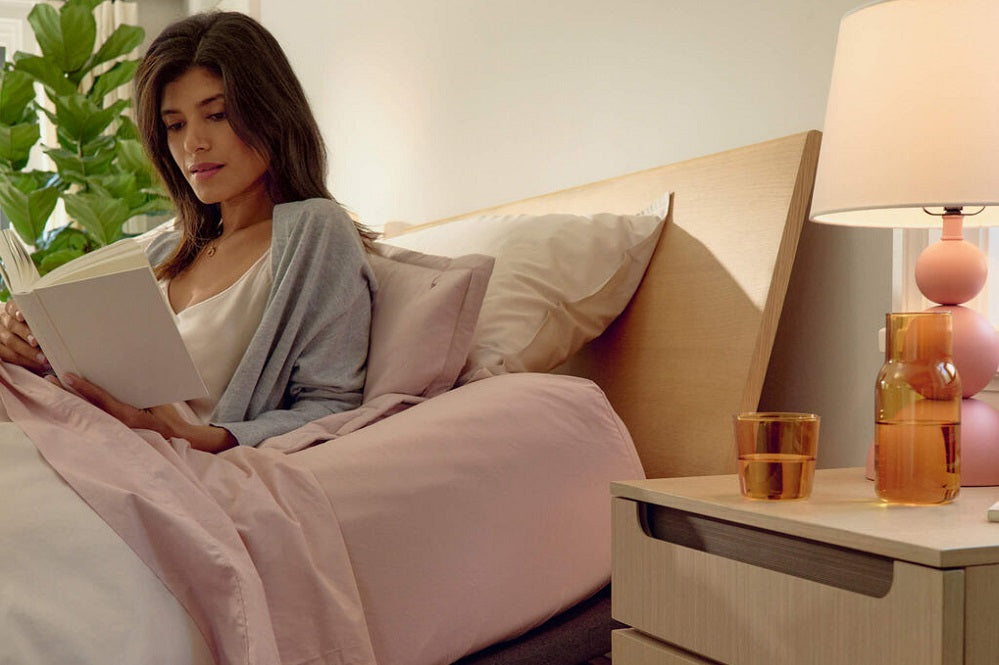Twin mattresses are typically 38 inches wide by 75 inches long, full mattresses are 54 inches wide by 75 inches long, and queen mattresses are 60 inches wide by 80 inches long.
Choosing the right bed is one of the most important decisions of your life. After all, you spend about a third of your time on Earth under the covers.
Of course, selecting a mattress is no easy task. There’s the firmness, the material, and a million other variables. But the first order of business is always the size. Twin vs full vs queen: which mattress is right for you?
If that question has been keeping you up at night, you’re in luck. This guide will help you pick the perfect mattress size for your living space, lifestyle, and body type.
Twin Mattress Size
First up is the twin-size mattress. The smallest of the bunch, the twin measures 38” wide by 75” long.1 No traditional bed is smaller than a twin, so if you’re after something compact, this is your best bet.
Twin mattresses allow you to turn even your smallest room into a bedroom. However, there are some limitations. To fit a twin bed naturally into a bedroom, we recommend a minimum room size of at least seven by nine feet.2 If you intend to furnish the room with, say, a desk and dresser, aim for eight by ten feet.2
Pros of a Twin Mattress
Small but mighty, the twin mattress is a versatile option for all sorts of sleepers. Many people gravitate toward a twin mattress because:
- It’s compact – When you’re trying to save space or make a room seem larger than it is, nothing fits the bill better than a twin.
- It’s lightweight – In a smaller bedroom, you may need to move the bed around to make the most of your space. Twin mattresses are easy to lift, drag, and rotate as needed. Those attributes also make it easy to clean the bedframe and mattress.
- It’s affordable – Because twin mattresses are made from less material, they tend to cost less than their full or queen counterparts.
Cons of a Twin Mattress
Although twin beds are convenient for tighter spaces, their diminutive size also comes with drawbacks. When you have a twin bed:
- You can’t stretch out – Most adults (and even teens) will have to curl up in a ball to sleep comfortably in a twin bed. It’s even worse if you’re tall — anyone over six feet will wake up with their toes hanging off the edge.
- You can’t move much – If you tend to toss, turn, and twitch in your sleep, a twin bed is not for you. One wrong move and you might find your cheek suspiciously close to carpeting.
Full Mattress Size
The full-size mattress is the Goldilocks option, the middle child of our comparison. Measuring 53” wide by 75” long at Casper, the full is wider than a twin but not quite as wide or long as a queen.2 You may also hear a full bed called a “double bed.”
The minimum recommended room size for a full bed is 10 by 11 feet.2
Pros of a Full Mattress
As the “not too big, not too small” option, the full mattress has plenty of advantages over other choices. We love a full-size mattress because:
- It’s relatively compact – Although a full is wider than a twin, its footprint is still manageable. As such, full mattresses make an excellent choice for guest rooms or growing teens with smaller bedrooms.
- It’s comfortably wide – Those extra 16 inches of width make a lot of difference when compared to a twin mattress. A solo sleeper can stretch out a decent amount on a full without reaching the sides.
- It sleeps two – Make no mistake: Couples sleeping on a full bed need to be really close — because they’ll be sleeping nose-to-nose. Even so, a full can accommodate two snuggly sleepers. Luckily, there are benefits of sleeping next to someone. A study found that when couples share a bed, their sleep cycles naturally sync, resulting in them spending about half the night in harmonious sleep synchrony.3
Cons of a Full Mattress
The versatile full mattress works in many situations, but it’s not a one-size-fits-all choice. Here are some disadvantages of a full mattress:
- You can’t include the whole family – Cuddling on a full mattress as a couple? No problem. Inviting the pets or the kids for a movie in bed? Not likely. Be prepared for an elbow or two in the ribs.
- You might want extra length – A full is the same length as a twin (75”), which means it’s no better for taller folks.
- You may grow out of it – A full mattress can feel like an in-between bed; larger than your childhood mattress, but smaller than your ideal bed as an adult with a partner.
Queen Mattress Size
The queen mattress is, well, the queen of beds. Coming in at 60” wide and 80” long, a queen is longer and wider than a full bed.2
With their accommodating dimensions, queen-size mattresses are well-suited to primary bedrooms measuring at least 10 x 10 feet.2
Pros of a Queen Mattress
Queen mattresses are fantastic because they’re large, yet not as imposing as a king bed. We’re fans of the queen bed because:
- It’s roomy – If you’re a solo sleeper with a queen-size mattress, the (dream)world is your oyster; you can move around freely and include as many pillows as you want.
- It’s perfect for couples – Add a second person to the mix, and you can still sleep comfortably. There’s enough room — and airflow — for you and your bedmate to snooze cozily through the night.
- It’s a long-lasting investment – A queen mattress can grow as you do. Buy one as a single sleeper, and watch as it accommodates your partner, pets, and children.
Cons of a Queen Mattress
Even though there’s a lot to love about a queen-size mattress, nothing’s perfect. These are the downsides to owning a queen bed:
- You lose out on floor space – Every extra inch of mattress is a missing inch from your bedroom. A queen bed will make a smaller space feel cramped.
- You need two people to move it – Relocating a queen-size bed takes more effort, as does lifting it for cleaning. (Even putting on the sheets is more work).
Suitability of a Twin vs Full vs Queen Mattress
So, should you choose a twin, a full, or a queen? It depends on your preferences, needs, and living situation. Let’s take a closer look at when to buy each mattress size.
Who Should Choose a Twin Bed?
A twin-size bed is perfect for you if:
- You’re a shorter solo sleeper
- You’re buying a bed for a child
- You have limited floor space
- You’re on a tight budget
Who Should Choose a Full Bed?
A full-size bed is your best bet if:
- You’re a solo sleeper who needs a little more space
- You’re a couple with a small bedroom (and a love for cuddling)
- You’re buying a bed for a teen
- You need a suitable bed for the guest room
Who Should Choose a Queen Bed?
A queen-size bed is worth springing for if:
- You’re a solo sleeper prone to stretching out like a starfish
- You’re a couple who values personal space
- You have kids or pets who frequently join you
- You’re furnishing a larger bedroom
Variations of Twin, Full, and Queen Beds
And what if none of these options feel quite right? Luckily, these aren’t your only mattress choices. You may benefit from picking an alternative mattress size, such as4:
- Twin XL – At 38” wide and 80” long, a twin XL mattress is perfect for taller sleepers who don’t need the added width of a queen. Twin XL mattresses are ideal for college students in smaller dorm rooms or kids post-growth spurt. Learn more about the twin vs twin XL mattress in our blog.
- Full XL – The full XL takes the length of a queen mattress (80”) and keeps the width of a full bed (53”). It’s an excellent choice for taller folks or couples with minimal space.
- RV queen – Measuring 60” wide and 75” long, the RV queen (also called the short queen) is as wide as a standard queen but as long as a twin or full mattress. The name gives away the use case: These mattresses are great for couples with limited space, like those in a motorhome.
- Olympic queen – Need some extra width? The Olympic queen may be the answer. These mattresses are 66” wide and 80” long. In other words, they’re six inches wider than a traditional queen, making them ideal for couples with kids and pets who lack the room for a proper king mattress.
Note that these specialty sizes can be difficult to find, and you may have to shell out more for the mattress and suitable sheets. Learn more about the biggest bed size in our blog for more information.
Shop Casper and Find Your New Favorite Mattress Today
Between the standard mattress sizes and the endless variations, there’s sure to be the best mattress out there that suits your needs. Measure your space, assess your sleeping, and you’re bound to make the right decision.
Whatever size you choose, choose Casper. Our comfortable, durable mattresses are made to lull you softly to sleep — whether you need a twin, a full, or a queen.
Sources:
- The Sleep Foundation. Twin Size Bed Dimensions. https://www.sleepfoundation.org/mattress-sizes/twin-size-bed-dimensions
- Casper. Mattress Sizes and Dimensions: Which Bed Size Is Right For You? https://casper.com/mattress-size-comparison-guide.html
- National Library of Medicine. Bed-Sharing in Couples Is Associated With Increased and Stabilized REM Sleep and Sleep-Stage Synchronization.https://www.ncbi.nlm.nih.gov/pmc/articles/PMC7330166/
- National Council on Aging. Mattress sizes and bed dimensions. https://www.ncoa.org/adviser/sleep/mattress-sizes/



